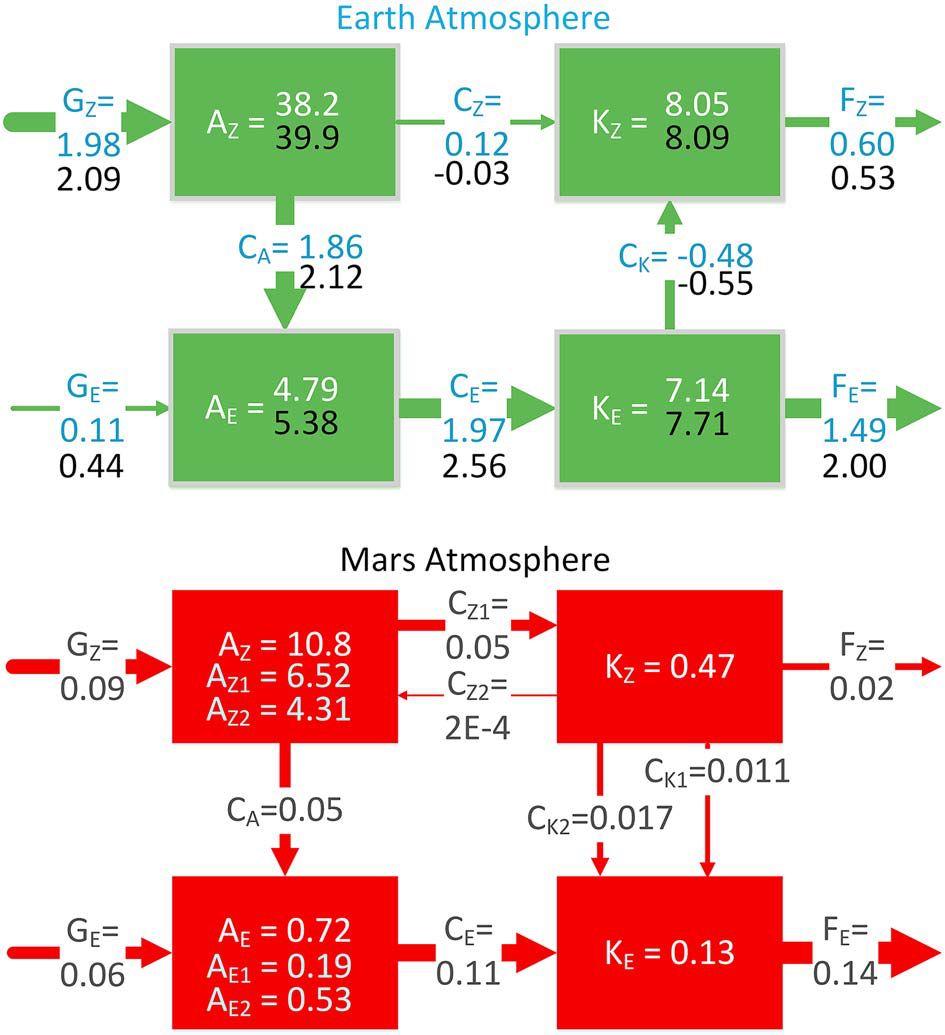Mars modelling and data assimilation
Data assimilation using the LETKF
My current work focuses on developing the LMD Mars data assimilation scheme, and using it to understand aspects of Mars' atmospheric circulation. The scheme blends together observations from spacecraft in Mars orbit with simulations using the LMD Mars Global Climate Model (GCM). Data assimilation is a technique widespread in environmental science. It combines a model with observations in a statistically rigorous manner to produce representations of the system closer to reality than either the model or the observations by themselves. In addition, the model fills in gaps where no observations are available, and retrieves unobserved quantities based on known relationships between observed and unobserved variables.
The LMD Mars data assimilation scheme was developed by Navarro et al. (2014, 2017). It uses the Local Ensemble Transform Kalman Filter (LETKF) method for data assimilation (Hunt et al., 2007), and assimilates observations from the Mars Climate Sounder instrument (MCS) on board Mars Reconnaissance Orbiter (MRO).
The LETKF is an ensemble-based data assimilation scheme that, like other Ensemble Kalman Filters, uses an ensemble of model simulations to approximate the background error covariance matrix required by the Kalman Filter. The local aspect of the scheme prevents spurious long-range correlations from introducing errors into the background error covariance (Hamill et al., 2001), and also makes the assimilation practical from a computational point of view. The transform aspect of the scheme transforms the background ensemble perturbations onto orthonormal vectors with defined weights that describe the background error covariance in terms of linear combinations of the ensemble members (Bishop et al., 2001).
Work currently focuses on using data from the Atmospheric Chemistry Suite (ACS) instrument on board the ExoMars Trace Gas Orbiter spacecraft (TGO), which has been in low Mars orbit since 2018. ACS's TIRVIM channel observes Mars in the thermal infrared in nadir and solar occultation modes. Of particular relevance to the assimilation are the measurements used to generate temperature profiles and column opacities for dust and water.
MarMITE
The Mars Modelling Information Tool for Engineering (MarMITE) is a joint project between RAL Space, The Open University, Oxford University, and Fluid Gravity Engineering Ltd., funded by the European Space Agency. It's aim is to develop a simple interface to complex global Mars atmospheric and environmental data to support Mars exploration mission development and preparation. The tool interrogates the Martian atmosphere using the LMD Mars Climate Database (MCD).
My contribution to this project involved developing various sub-models running alongside the MCD to provide additional information to the user. These focused on high resolution modelling of the Martian boundary layer, the impact of detached dust layers on the Martian climate, both using the UK Mars GCM, and a validation of the MCD against a reanalysis of the Martian atmosphere where column dust opacities and dust profiles from MCS on board MRO had been assimilated into the UK Mars GCM.
Energy cycle in the Martian atmosphere
In work by Tabataba-Vakili et al. (2015) we used reanalysis data from the MACDA dataset to calculate a Lorenz energy budget for the Martian atmosphere.
The Lorenz energy budget measures reservoirs of available potential energy and kinetic energy, split into its mean (usually zonal- or time-mean) and eddy quantities. Also quantified are the rate of energy exchange between these reservoirs, and the generation and dissipation rates. By examining the directions and relative magnitudes of such transfers, various paradigms of the atmospheric general circulation such as Hadley circulation, barotropic instability, and baroclinic instability can be identified.

The MACDA dataset combines observations from the Thermal Emission Spectrometer on board NASA's Mars Global Surveyor spacecraft during Mars Years 24-27 with the UK Mars General Circulation Model.
The directions of most energy conversion terms for Mars were found to be similar to Earth, with the exception of the barotropic conversion between zonal and eddy kinetic energy reservoirs. Further seasonal and hemispheric decomposition revealed a strong conversion between zonal energy reservoirs over the year, but these were balanced in the global-annual mean. Separating the diurnal timescale contributions to the energy reservoirs and conversion terms suggested that thermal tides make significant contributions to these conversions, particularly during global dust storms.
